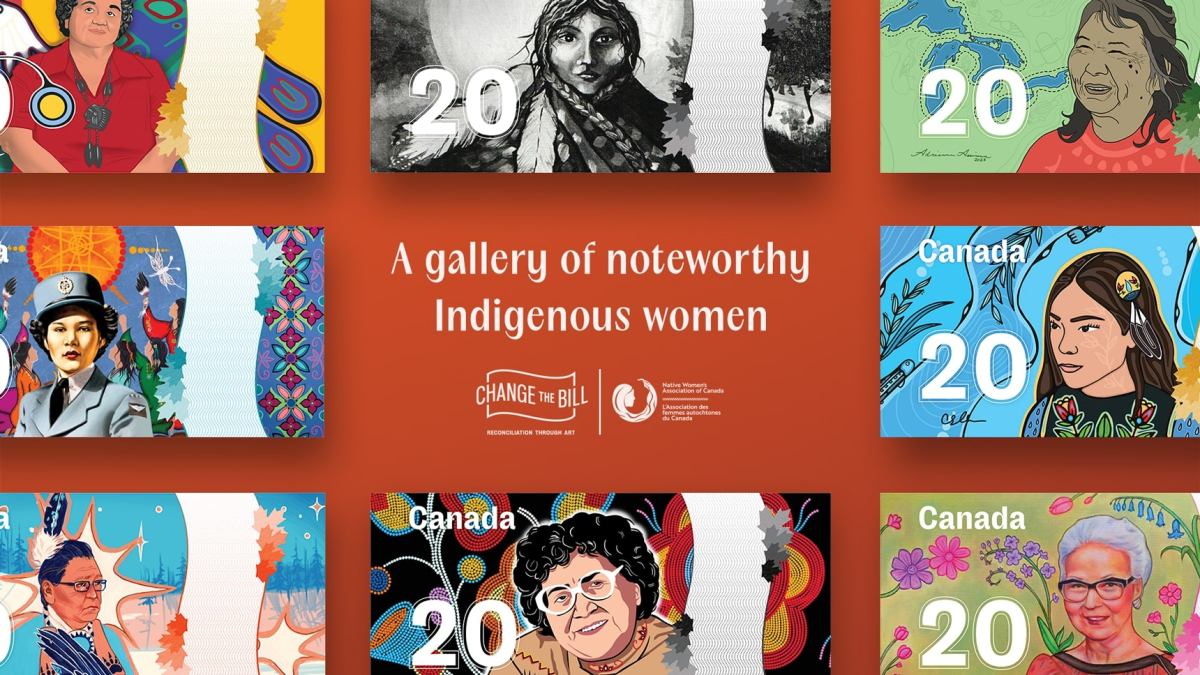Support strong Canadian climate journalism for 2025
The Queen is dead. Is it now time for an Indigenous woman to take her place on the $20 bill?
The Native Women’s Association of Canada (NWAC) is asking that question through its new art exhibition, “Change the Bill.” The concept for the exhibition began following the Queen’s death, as the decision of changing the figure on the back of the Canadian dollar loomed near, Irene Goodwin, NWAC's director of policy and programs, culture and art, told Canada’s National Observer.
An Indigenous woman has never been represented on a Canadian banknote, Goodwin explained.

The exhibition, which runs from Jan. 20 to 28 at The Local Gallery in Toronto, is a call to action to promote reconciliation through art, according to an NWAC press release. Art pieces are also available to be viewed and purchased online, with all proceeds going to the artists.
The exhibition is on display as part of Design TO’s 2023 festival. NWAC also enlisted TAXI, a leading brand experience agency, to emphasize underrepresented and marginalized Indigenous women in Canadian society, the press release added.
Each piece in the exhibition is a different artist’s reimagination of the $20 bill in both its background design and historical figure. Each artist decided which woman they wanted on their bill as well, Goodwin said.

Some figures include child welfare activist Cindy Blackstock, water protector and Elder Josephine Mandamin and former Chief, Elder and Air Force veteran Margaret Pictou.
“If the $20 bill was to be reimagined, it would be to highlight the significant contributions of Indigenous women to the development of Canada, as well as highlight the Indigenous artists that we have,” Goodwin said.
NWAC reached out to several artists towards the end of 2022, a quick turnaround for the art exhibition, and Goodwin says artist contributions continue to roll in. For the exhibition, each artist was asked to celebrate an Indigenous hero without any parameters, Goodwin said.
Some artists chose historical figures like Pictou. Another artist, Mando Littlechild, chose her Kokum (grandmother) who was a residential school survivor, which is “an important story” to tell, Goodwin said.

Goodwin thinks the exhibition isn’t merely about putting an Indigenous woman on the banknote as an end in itself; instead, it’s a celebration and recognition of the significance of the contributions of Indigenous women.
It’s an act of reconciliation to promote both the women on the banknotes and the artists who composed them, Goodwin explained.

“Educating future generations about the contributions of Indigenous women and fostering a deeper understanding and appreciation of their significance creates a more just and equitable society for all Canadians,” Lynne Groulx, CEO of NWAC, said in the press release.
Matteo Cimellaro / Canada’s National Observer / Local Journalism Initiative







Comments
...best statement: "the queen is dead"... ...don't really want Charlie's head on my bills...!
Best idea yet,do it
We're skipping straight past Indigenous men? All unworthy?
Great idea, hope it is implemented! But will our systemic racism prevent this happening?
Isn't there a requirement, exempting the reigning British monarch, for bank note portrait candidates to be deceased for 25 years or more?
The 20 dollar bill “Margaret Pictou by Tracey Metallic. “ Is my favourite, all of the designs are beautiful and professional. However I do favour Margaret Pictou bill the most. I hope Canada chooses one of these beautiful designed bills for our new $20.